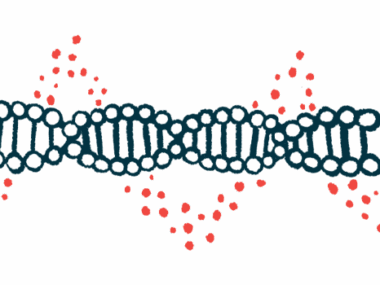Muscle Weakness May Be Only Sign of Cushing’s Disease: Case Report
Man, 36, first diagnosed with dermatomyositis after showing no other disease symptoms
Written by |

In rare cases, proximal muscle weakness may be the only indication of Cushing’s disease, a recent case report showed.
The patient, a 36-year-old man, was initially misdiagnosed with dermatomyositis, a rare disease that causes muscle inflammation and skin rash.
The report, “Proximal muscle weakness as the sole manifestation of Cushing’s disease, misdiagnosed as dermatomyositis: a case report,” was published in the Journal of Medical Case Reports.
The researchers noted the case “emphasizes the high diagnostic value of proximal muscle weakness, which can be the sole presenting manifestation of Cushing’s syndrome/disease, without any other typical signs or symptoms,” the researchers wrote.
Cushing’s syndrome is marked by excessive levels of cortisol in the body. The most common cause — in up to 80% of cases — is a tumor in the brain’s pituitary gland, which produces high amounts of adrenocorticotropic hormone (ACTH). In these cases, the condition is known as Cushing’s disease. ACTH is a hormone that stimulates the adrenal glands to produce cortisol.
Typical symptoms include weight gain, a “moon” face, fatigue, weakness, bone pain, mood disorders, and skin alterations, including easy bruising, acne, excessive hair growth (hirsutism), skin thinning, and stretch marks (striae).
Around 40 to 70% of patients also report muscle weakness, which is usually more frequent in women. Those most commonly involved are the legs’ proximal muscles, or upper part, of the legs.
Muscle weakness, but no other symptoms leads to wrong diagnosis
Researchers at the Shiraz University of Medical Sciences, Iran described a 36-year-old man with Cushing’s disease who went to the hospital complaining of proximal muscle weakness of the legs and arms. The symptoms began five months earlier and the man said walking, climbing stairs, and standing were difficult.
He had no changes in body weight and didn’t complain about mood or sleep disorders, headaches, or visual changes. Also, he had no family history of endocrine (hormone-related) or rheumatologic disorders.
In a first visit to an outpatient clinic, he had a skin rash and proximal myopathy (muscle weakness) and was diagnosed with dermatomyositis. But his myopathy continued despite treatment with the corticosteroid prednisolone and the immunosuppressant azathioprine, and eventually he became wheelchair-bound.
Four months later, his physician referred him to the hospital for more examination. A physical exam was unremarkable, except for a drop in muscle power and a decrease in deep tendon reflexes. He was unable to rise from a squat position, and from sitting with his arms crossed. But he didn’t show any of the typical Cushing’s signs, including a “moon” face, purple striae, easy bruising, a “buffalo hump,” or abnormal vision.
Lab work showed he had normal muscle enzyme levels, but abnormalities were seen in the speed at which electrical signals traveled along muscles, indicative of neuromyopathy — a disease that affects nerves and associated muscle tissue.
Brain imaging reveals pituitary tumor
A brain CT and a follow-up MRI scan revealed a well-defined and dense structure in the sellar region that extended to the suprasellar region, both around the pituitary gland, and involvement of other structures.
These findings suggested a pituitary macroadenoma, a large tumor in the pituitary gland, as opposed to a meningioma, a tumor that arises from the meninges — the membranes that surround the brain and spinal cord.
He was diagnosed with Cushing’s disease and had transsphenoidal surgery (TSS), a minimally invasive procedure to remove tumors from the pituitary gland. Tissue analysis confirmed the tumor was a pituitary adenoma.
The man was prescribed levothyroxine (100 mcg daily) for hypothyroidism, or low thyroid hormone levels. Two months after the surgery, his muscle weakness partially eased and he was able to walk with a walker.
A follow-up MRI scan again showed a mass in the suprasellar region and his blood cortisol levels failed to drop after an overnight low-dose dexamethasone suppression test (ODST), suggesting Cushing’s. The ODST measures blood levels of cortisol in the morning after patients take dexamethasone, a corticosteroid that normally blocks its production. Cortisol levels typically fail to drop in response to dexamethasone in people with Cushing’s.
The patient had a second surgery six months after the first. One year later, he could walk unassisted. He continues being treated with levothyroxine, along with testosterone (250 mg monthly), alendronate (70 mg weekly), calcium, and vitamin D supplements.
“Our patient, who had a 6-month history of difficulties climbing stairs and walking and needing a wheelchair, was misdiagnosed and treated as a case of dermatomyositis,” the researchers wrote. “After confirmation of Cushing’s disease and surgery, his muscle weakness improved dramatically and he is now walking without any aid.”






